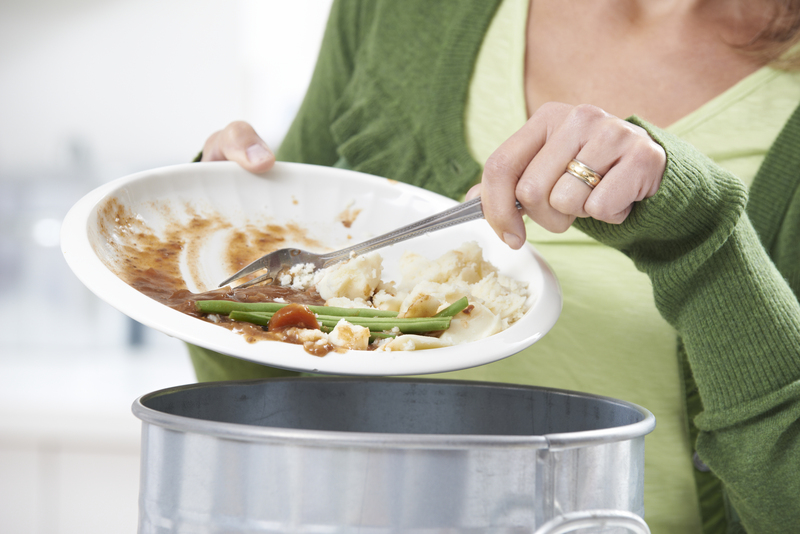From Kitchen to Recycling Bin: How to Properly Dispose of Cookware
As you spend years preparing family dinners and experimenting with new recipes, your kitchen inevitably sees its fair share of worn-out frying pans, chipped pots, and outdated bakeware. Eventually, these trusty companions need replacing--but what happens next? Disposing of cookware responsibly is not always as straightforward as it seems. In this guide, we'll walk you through how to properly dispose of cookware so you can make eco-friendly choices and keep unnecessary waste out of landfills.
Why Proper Cookware Disposal Matters
Every year, countless pots, pans, and other kitchen utensils end up in dumps, contributing to environmental pollution. Many common cookware items are made from metals, plastics, ceramics, and glass--materials that can either be recycled or upcycled if handled appropriately. Proper cookware disposal helps:
- Conserve valuable natural resources by recycling metals and other materials.
- Reduce landfill waste and the associated environmental impact.
- Prevent contamination from materials like non-stick coatings.
- Encourage sustainable living practices and raise community awareness.
Understanding Cookware Materials
Before learning how to dispose of old cookware, first identify what your pots, pans, and bakeware are made of. Different materials require different disposal methods:
- Stainless steel: Highly recyclable and often accepted at metal recycling facilities.
- Aluminum: Lightweight, recyclable, often found in bakeware and some pans.
- Copper: Sometimes present in high-end cookware; valuable and recyclable.
- Cast iron: Extremely durable and often upcyclable or recyclable.
- Non-stick coated pans: Contain Teflon or ceramic coatings that complicate recycling.
- Glass bakeware: Usually made of tempered glass, not accepted in regular glass recycling streams.
- Ceramic cookware: May be recyclable, but depends on local facilities.
- Plastic utensils and lids: Recycling depends on resin identification codes and local regulations.

General Principles for Cookware Disposal
Although you may feel tempted to toss old cookware in the trash, it's important to seek out more sustainable alternatives. Below are crucial steps for the ethical and eco-friendly disposal of cookware:
- Evaluate for repair or donation: Could your item be fixed, repurposed, or given to someone in need?
- Identify the material: Check for labels or manufacturer information to determine recyclability.
- Consult local recycling programs: Not all recycling centers accept kitchenware, so verify what is accepted in your area.
- Prepare cookware for recycling: Remove plastic handles, screws, or any non-metal components if possible.
- Dispose of non-recyclable cookware responsibly: Find specialized facilities or upcycle creatively.
Metal Cookware: Stainless Steel, Aluminum, Cast Iron, Copper
Recycling Metal Pans and Pots
Metals are among the most recyclable materials in your kitchen. Here's how to ensure your old stainless steel, aluminum, cast iron, or copper cookware is handled properly:
- Remove non-metal parts: Unscrew plastic handles, knobs, or silicone grips as these often can't be recycled with metal.
- Check with local scrap yards: Scrap metal facilities or local recycling centers are usually the best bet for recycling metal cookware. Some may even pay for valuable copper or bulk metal.
- Use dedicated drop-off bins: Larger cities may provide drop-off locations specifically for metal kitchenware.
- Resell or donate: If your pans or pots are still usable, consider listing them on thrift apps, hosting a garage sale, or donating to shelters.
Why Can't Cookware Go in the Curbside Bin?
Many municipal recycling programs do not accept cookware in regular blue bins due to contamination and sorting concerns. Cookware items are often too large, heavy, or made with mixed materials that automated systems can't process. Drop them off at dedicated scrap or recycling centers instead.
Non-Stick and Coated Cookware: An Added Challenge
Tossing non-stick pans in your normal recycling is not recommended. Their coatings, such as Teflon (PTFE), can contaminate recycling streams and pose safety hazards. Here's what to do:
- Contact the manufacturer: Some cookware brands offer take-back or recycling programs for end-of-life products.
- Check specialty recycling events: Community organizations sometimes arrange e-waste and hard-to-recycle drives that include non-stick pans.
- Handle old non-stick pans as landfill waste: If no recycling or repurposing option exists, wrap them securely and dispose of them in the regular trash as a last resort.
Important: Never incinerate or burn non-stick pots and pans, as this can release toxic fumes.
Can You Remove Non-Stick Coating For Recycling?
While theoretically possible, removing non-stick coatings yourself can be unsafe and labor-intensive. Local scrap yards may have their own protocols, so always call ahead and ask what they accept before dropping off these items.
Glass and Ceramic Bakeware Disposal
Unfortunately, tempered glass bakeware (like Pyrex) and most ceramics are not recyclable through standard glass recycling streams. That's because they are formulated to withstand high temperatures, making them incompatible with bottle recycling facilities.
- Repurpose creatively: Use old ceramic or glass dishes as planters, drawer organizers, or paint palettes.
- Donate intact items: Intact glassware or casseroles may be accepted at thrift stores, shelters, or food banks.
- Specialized recycling: Search for local art centers or building supply recyclers that accept broken ceramics or glass pieces for mosaics.
- Landfill as last resort: If the items are shattered or contaminated, wrap securely (to prevent injury) and dispose of in household garbage.
Disposing of Plastic Utensils and Accessories
Old spatulas, measuring cups, and food storage lids made of plastic may be recyclable, but check first for a recycling number (usually found on the underside of the item). Guidelines differ from city to city:
- Resin code 1 or 2: Often accepted in curbside recycling programs.
- Other numbers (3-7): Rarely accepted unless your municipality has extensive plastic recycling programs.
- Damaged or burned plastic: Must go in the landfill if not accepted locally.
Tip: Consider reusing sturdy plastic kitchen tools for cleaning or crafts instead of tossing them away.
Donating or Repurposing Old Cookware
Who Might Need Your Old Kitchenware?
Even if your cookware is scratched, mismatched, or well loved, it might still serve others. Before recycling or throwing away any item, consider donating to:
- Charities or thrift stores: Many accept gently used kitchen goods if they're still safe for food prep.
- Domestic violence or homeless shelters: Often in need of basic cooking supplies.
- Animal rescue organizations: Metal and glass pans are useful for feeding or nesting animals.
- Friends, students, or neighbors setting up a first home: Your cast-offs could be a treasure for someone else.
Creative Upcycling Ideas
- Make a planter from a metal pot or pan for herbs or succulents.
- Turn a large, worn baking sheet into a magnetic bulletin board for your home office.
- Use old ceramic plates for mosaic art or garden edging.
- Repurpose cookware for organizational storage in garages, craft rooms, or sheds.
- Create bird feeders, candle holders, or even wall art from quirky cookware shapes!
Cookware Disposal for Specialized Materials
Pressure Cookers
Modern and vintage pressure cookers almost always contain mixed materials: metal, plastic, and rubber gaskets. Here's how to handle them:
- Disassemble as much as possible, separating metals from non-recyclables.
- Recycle metal parts at a scrap yard.
- Landfill rubber and plastic components if not accepted by your local recycling program.
Electrical Appliances (Rice Cookers, Slow Cookers, Electric Griddles)
Never toss electrical appliances in the trash. Instead:
- Locate an e-waste collection event or facility in your area.
- Contact the manufacturer for possible recycling or trade-in options.
- Check with local electronic appliance stores for disposal programs.
Where to Recycle Cookware: A Quick Reference Guide
- City-sponsored recycling centers: Best for metal cookware; call ahead for accepted items.
- Scrap metal dealers: Will generally accept all-metal pots and pans--check for requirements regarding removed handles or coatings.
- Specialty recycling events: Some municipalities or non-profit organizations hold hard-to-recycle drives.
- Retailer take-back programs: Certain stores (like Sur La Table or Williams Sonoma) periodically offer cookware recycling in partnership with manufacturers.
- Donation sites: Goodwill, Salvation Army, and local shelters.
How to Prepare Your Cookware for Recycling
- Clean thoroughly: Food residue can contaminate recycling batches.
- Remove non-recyclable parts: Separate plastic, wood, or silicone handles.
- Bundle small items together: Wire-tie utensils and small pieces so they're not lost in transit.
- Check for local guidelines: Some centers require you to label or separate items by material.
Frequently Asked Questions About Cookware Disposal
Can I recycle pans with a non-stick coating?
Typically, no. Most municipal recyclers do not accept non-stick pans due to the chemical coating. Try contacting the manufacturer or seek out specialty recycling options.
Where can I take old pots and pans for recycling?
Look for a local scrap metal yard or a city-run recycling center that lists metals (including aluminum, stainless steel, or cast iron) as accepted materials.
How do I dispose of broken glass cookware?
If it's not accepted by your recycling program, wrap the pieces in newspaper or cloth, place them in a box, and discard in the normal trash (as a last resort).
Can I donate all used cookware?
As long as it's still in usable condition (not excessively stained, burned, or warped), many donation centers will accept it. However, always check with the organization before dropping items off.
What about vintage or collectible cookware?
Some old pots, pans, and bakeware--especially from well-known brands--are collectibles! Consider selling or donating these to vintage shops or collectors, instead of recycling.
Eco-Friendly Brands and Take-Back Programs
Several cookware brands now have sustainability initiatives for closed-loop recycling. For instance:
- GreenPan: Runs take-back programs in select cities.
- Sur La Table: Occasionally hosts cookware recycling promotions in-store.
- Le Creuset: Customer service can provide guidance for recycling old cast iron pans.
Search your cookware brand's website for environmental policies or customer recycling programs--many are launching new initiatives every year!

Key Takeaways for Responsible Cookware Disposal
- Never throw old cookware in your curbside recycling bin unless your city specifically allows it.
- Identify your item's material and seek out corresponding recycling or donation avenues.
- Remove all non-metal, non-recyclable components before recycling metal items.
- Maximize your cookware's lifespan through repair, upcycling, or donation whenever possible.
- Stay informed with your local recycling center's current list of accepted kitchenware.
The next time you're spring cleaning or upgrading your kitchen, remember--proper cookware disposal is one small act that can make a world of difference!
Final Thoughts
When it comes to disposing of cookware properly, every small decision adds up. By recycling, donating, or upcycling your old kitchen tools responsibly, you help minimize waste, conserve resources, and set an example for others. Let's keep our kitchens--and our communities--greener for generations to come!